Best Stage Keyboards for Organ Players: All-in-one Gigging Machines
Modern stage keyboards are to organ and synth players what stage pianos are to pianists: all-in-one instruments that contain all the sounds and effects needed for a typical live performance. However, unlike a stage piano, a stage keyboard features a keyboard action optimized for playing organ and synth sounds. Let’s take a look at the best stage keyboards available today.
Best Stage Keyboards
What Is a Stage Keyboard?
Granted, the term may be misleading, as a stage piano is of course also a keyboard meant to be played on stage, as is a synth workstation. In recent years, however, several manufacturers have begun to use the term “stage keyboard” to refer more specifically to an instrument that is similar in concept to a stage piano, with one important difference. While professional stage pianos such as the Nord Stage, Yamaha CP, or Roland RD-2000 are all about weighted hammer-action keybeds that aim to recreate the playing feel of a piano, stage keyboards feature light and fast actions optimized for playing organ and synth sounds.
As a gigging keyboard player, you know the problem all too well: there’s no single keyboard action that does everything you need. If you’re only going to take one keyboard on the road, you’ll always have to compromise somewhere, which is the main reason why so many keyboard players insist on hauling multiple instruments around. While a stage piano with a weighted hammer action keybed is great for piano-style playing and usually also does a decent job for the occasional pad or string sound, it outright sucks if you’re trying to play fast-paced synth licks or basses, or, even worse, Hammond-style organ parts. Playing organ on a hammer action keyboard isn’t just no fun, it’s simply impossible if you’re going to do it right.
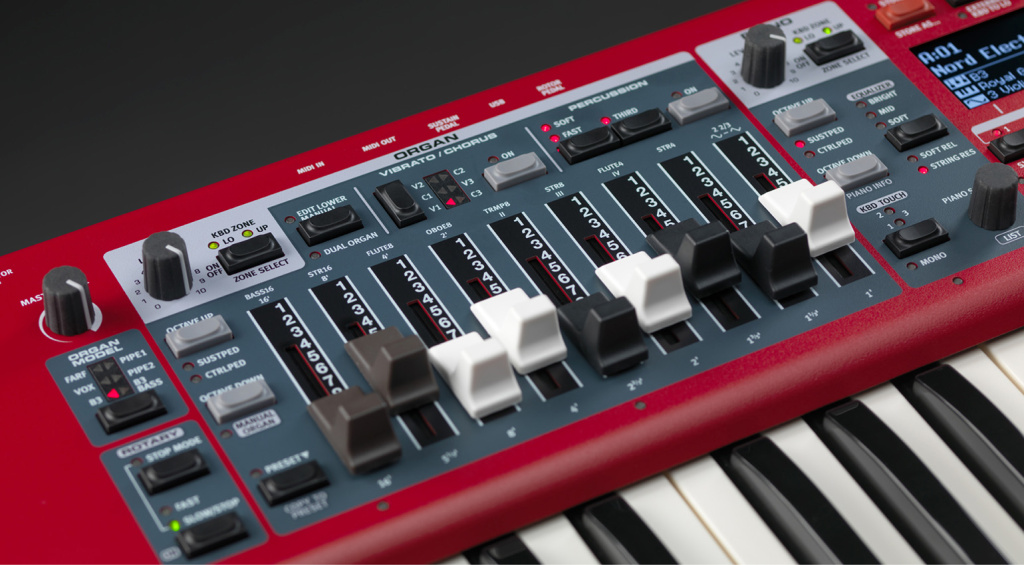
That’s why several manufacturers have introduced stage keyboards that offer an all-in-one package similar to a stage piano, but with a focus on organ and synth sounds. While most stage pianos also contain a handful of organ sounds, they usually feel like an afterthought. In a stage keyboard, the organ and synth parts take center stage, with the piano section taking the back seat.
At the center of most modern stage keyboards is a high-quality Hammond organ emulation with all the necessary effects. Emulations of other classic organs, such as Vox or Farfisa, may also be included. The keyboard is usually unweighted and often features waterfall keys (without the “lip” that protrudes from the keys of typical piano keyboards). This is essential for characteristic playing techniques such as palm glissandi and rapid note repetitions (sputter). The organ simulation is usually controlled via at least one set of drawbars, which means that experienced organ players are able to tell the sound just by looking at it.

Organ or Keyboard?
That said, modern stage keyboards are much more than organs. In addition to the organ section, they offer a wide range of other sounds such as pianos, electric pianos, and synths, which can be combined with the organ in split and layer configurations. They also usually have a good selection of onboard effects with hands-on control. As such, they’re not all that different from stage pianos, albeit with a different focus. The main difference is the keyboard action, which is optimized for organ and synth playing as opposed to piano. Because the one keyboard that does it all unfortunately doesn’t exist.
If you need to decide between a stage keyboard and a stage piano, you should therefore first determine your main focus: do you mainly play piano, with the occasional organ or synth part on the side, or is it the other way around? As you’ll likely have to cover everything as a working keyboard player, the next question is: which keyboard is the best compromise for you? Do you find it easier to play the occasional organ part on a hammer-action keyboard, or are you fine with playing piano on unweighted keys, should the need arise? Depending on how you answer this question for yourself, a stage piano or stage keyboard will be the right choice for you.
The Best Stage Keyboards
Most stage keyboards come from manufacturers known for excellent organ emulations, such as Hammond or Nord. Roland has also long been a major player in the field with the V-Combo series. More recently, manufacturers such as Yamaha and Arturia joined the game. Many stage keyboards are available in various keyboard sizes, such as 61 or 73 keys.
Nord Electro 6D: The Classic
The Nord Electro pioneered the modern stage keyboard and helped define the style of instrument. While the 6th generation has been out for a while and one might argue that it’s due for an update, it’s still one of the most popular choices for gigging players across the world. The “D” denotes the version with waterfall keys and drawbars, meaning that this is the model to choose if your main focus is organ playing.
In addition to the Hammond B3, the organ section offers transistor organs from Vox and Farfisa, as well as two pipe organs. The Nord Electro also boasts a piano section that you can fill with the piano sounds of your choice from the extensive Nord Piano Library. For everything else, there’s a sample synth section based on the Nord Sample Library. With integrated stereo effects and a very stage-friendly workflow, the Nord Electro remains one of the most popular stage keyboards.
The Nord Electro 6D with 61 or 73 keys is available at Thomann*.

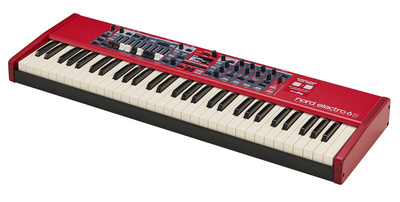

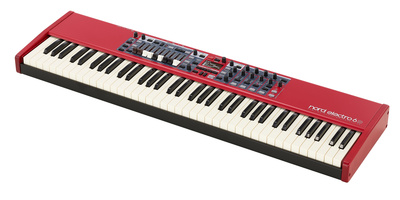
Roland V-Stage: New Kid on the Block
Like the Nord Electro, the Roland V-Combo series helped define the modern stage keyboard. In 2025, the manufacturer took the concept to the next generation with the new V-Stage. While the 88-key model features hammer-action keys and is geared more towards piano players, the 76-key model has semi-weighted waterfall keys, making it an organ- and synth-focused stage keyboard in the narrower sense of this article.
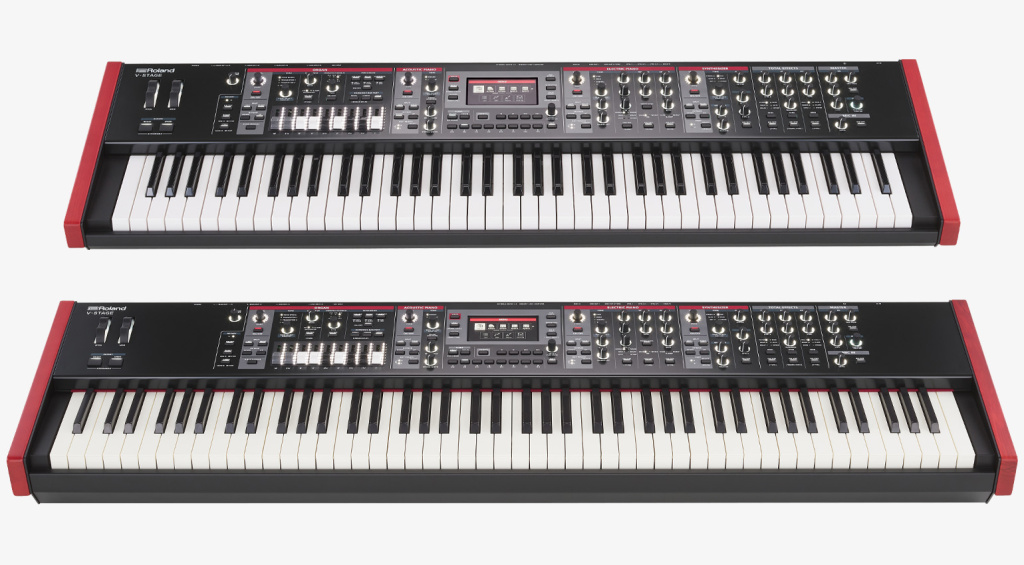
Both models offer four independent sections for organ, acoustic pianos, electric pianos, and synths. The organ section boasts four organ models (Virtual Tone Wheel, 2 transistor organs, pipe organ) and all the necessary effects, controlled by a physical drawbar set with LEDs. The acoustic pianos are based on the V-Piano engine, while the electric pianos use Roland’s SuperNATURAL engine. A dual-layer ZEN Core synth engine with more than 400 sounds covers everything else. With plenty of hands-on control for all sections, the Roland V-Stage has “live performance” written all over it.
The Roland V-Stage is available at Thomann*.

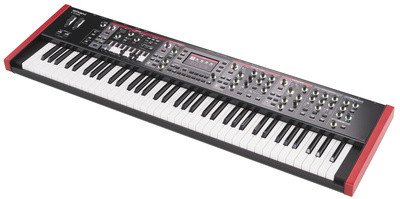

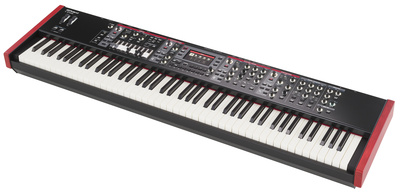
Hammond SK PRO: Legendary Heritage
The Hammond SK PRO is a stage keyboard based on the organ engine from the Hammond XK-5. In addition to the manufacturer’s legendary tonewheel organs, it emulates transistor and pipe organs, along with the characteristic effects. While it does of course offer a digital rotary speaker emulation, the SK PRO also boasts an 11-pin connector for a real Leslie cabinet as a special feature.
In addition to the organ, there is a 128-voice piano/ensemble section whose sounds can be extensively edited. Furthermore, the SK PRO boasts a virtual analog synth with six different oscillator configurations, filters, and envelopes.
The Hammond SK PRO is available with 61 or 73 waterfall keys. You can get it at Thomann*.

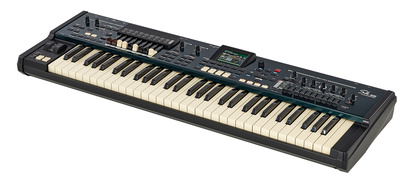

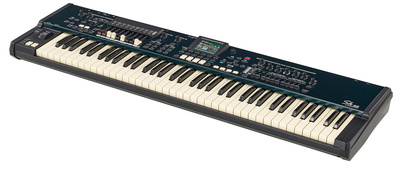
Yamaha YC Series: Versatile Stage Keyboard
Introduced in 2020, the Yamaha YC series is available with 61, 73, or 88 keys, although only the 61-key version features an organ-style waterfall keyboard. The two larger versions have hammer-action keys, so they’re geared more towards piano players.
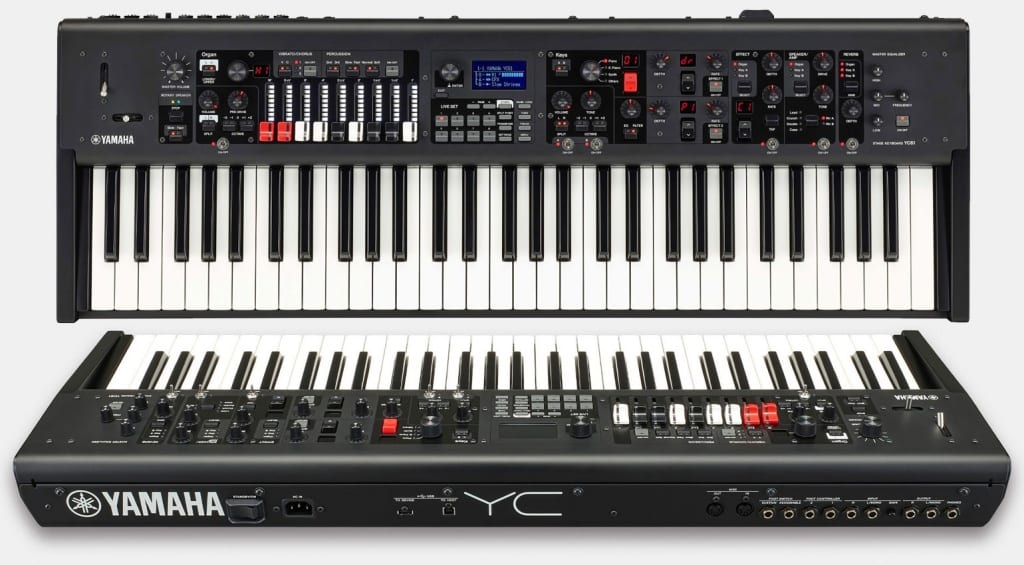
Based on the Yamaha VCM engine (Virtual Circuitry Modeling), the organ section emulates three classic vintage organs, complete with a VCM-based Leslie emulation and other typical effects. It is controlled via a set of LED drawbars. In addition, the Yamaha YC’s repertoire includes FM organ sounds from the DX7 and its siblings.
Beyond the organ, the YC offers a keys section with a wide range of piano, electric piano, and synthesizer sounds. With lots of real-time control over sounds and effects, the Yamaha YC series is one of the most versatile stage keyboards.
The Yamaha YC series is available from Thomann*.

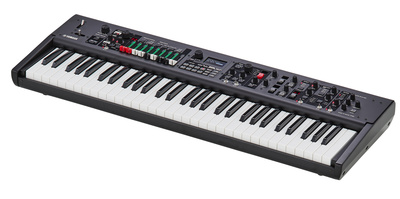

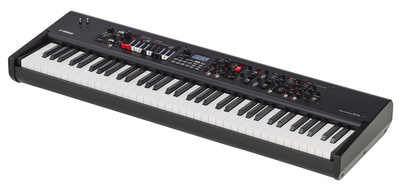

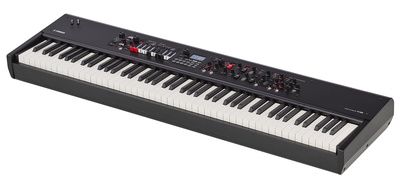
Yamaha CK Series: An Affordable Alternative
The Yamaha CK series is a more affordable alternative to the aforementioned YC. While the 88-key model boasts a piano-style hammer action, the smaller CK61 has semi-weighted keys for synth and organ playing.
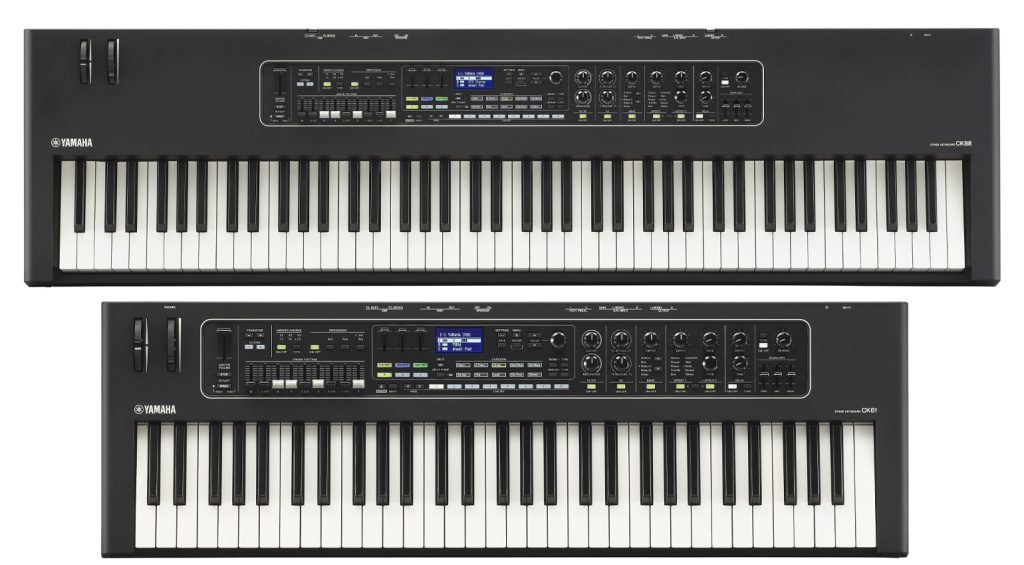
With 363 sounds, the CK covers all the basics. The organ and synth sounds come from the YC series, while the piano sounds were taken from the CP series stage pianos. You can combine up to three sounds in split and layer configurations.
Although the panel isn’t quite as lavishly equipped with controls as the YC series, the Yamaha CK does offer a set of short organ drawbars. Important synth settings such as filters and envelopes are also tweakable in real time. The built-in effects section features two multi-effects, overdrive, delay, reverb, and EQ.
The Yamaha CK61 and CK88 stage keyboards are available at Thomann*.

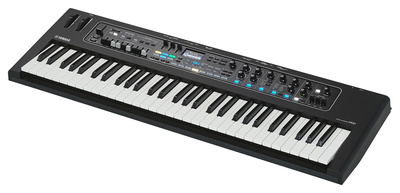

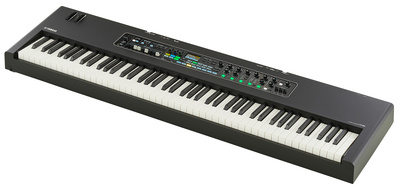
Arturia AstroLab: Now for Something Completely Different
The Arturia AstroLab (read our review here) does things a bit differently. Unlike the other stage keyboards on this list, it isn’t so much about organ playing (although it does include the Arturia B-3 V, Farfisa V, and Vox Continental V models). Instead, the AstroLab aims to bring the sounds from Arturia’s extensive V Collection onto the stage and make them instantly accessible in a performance-ready instrument. Think of it as Analog Lab for the stage.
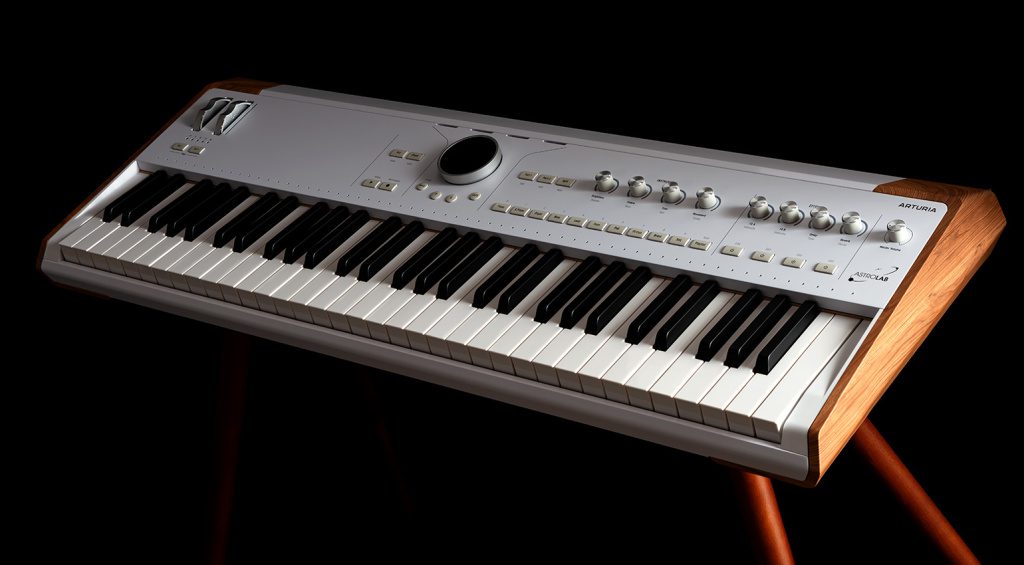
Over 1600 sounds from 40 Arturia software instruments are included. While the AstroLab doesn’t let you edit all their parameters down to the last detail, it does have four macro controllers for hands-on tweaking. In addition, there’s an extensive effects engine, as well as a built-in arpeggiator and looper. If you own the full versions of the included software synths, you can fully edit the sounds on your computer and then transfer them to AstroLab.
Just recently, Arturia added the AstroLab 88 with hammer-action keys to the range. The smaller AstroLab 61 features semi-weighed synth-action keys.
The Arturia AstroLab is available at Thomann*.

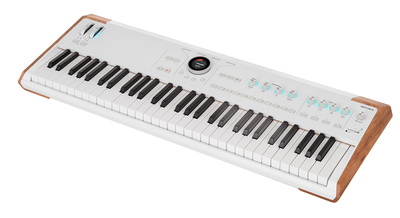

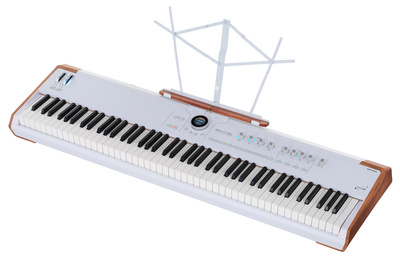
*This post about stage keyboards contains affiliate links and/or widgets. When you buy a product via our affiliate partner, we receive a small commission that helps support what we do. Don’t worry, you pay the same price. Thanks for your support!
3 responses to “Best Stage Keyboards for Organ Players: All-in-one Gigging Machines”
 4,5 / 5,0 |
4,5 / 5,0 | 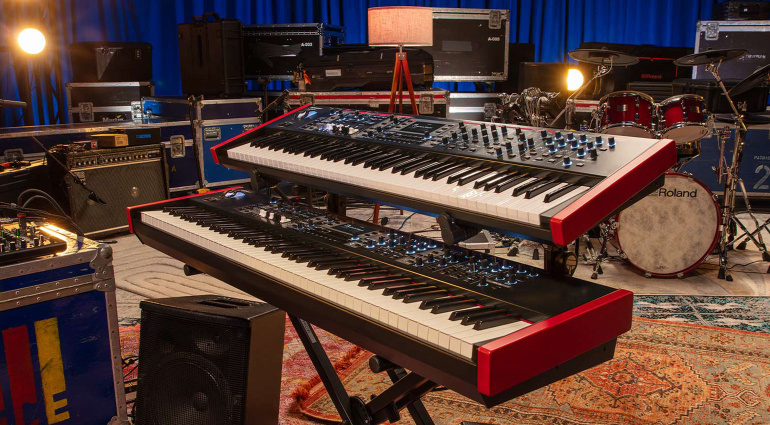


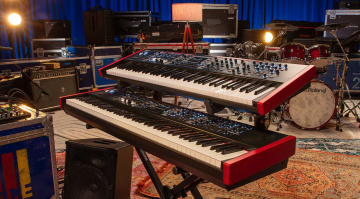

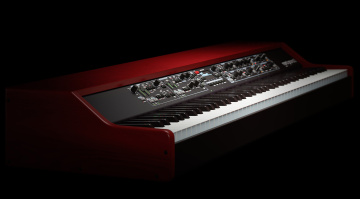
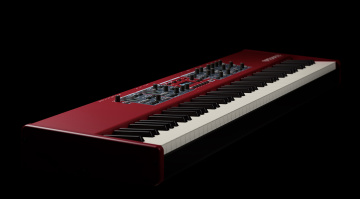
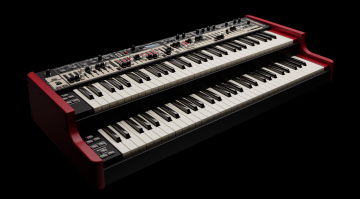
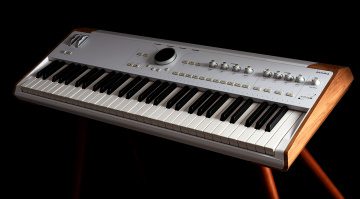

You forgot THE One, Viscount Legend One, it is not the best on Piano/Ep and synth, but it has those sounds too in decent enough variation, is bi-timbral, AND kills everything else in the article when it comes to Organ…
nice to see the keyboard Thank you.
Crumar Mojo is one to consider as well. Incredible…aside from the acoustic piano .